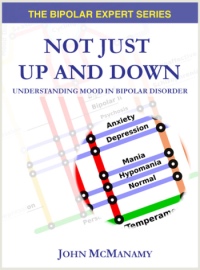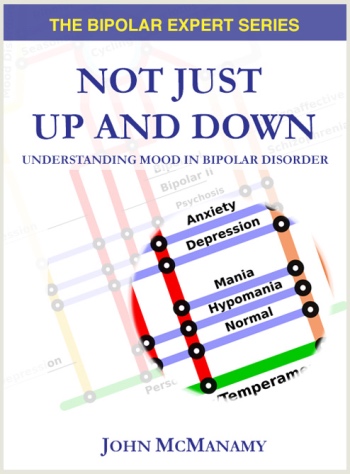Personality Disorders - Dimensions
 |
Clinicians like it quick and simple. But what about us?
|
The DSM-5 and personality. Even the most elegant system of slicing and dicing personality has one fundamental flaw - namely, we forget we are dealing with personality in the first place. When all is said and done, when things go wrong we are talking too much of it (as in the case of someone "losing it") or not enough (as in the case of someone being totally indifferent). Labels such as antisocial and borderline - as convenient and indispenable as they may be - tend to divert our attention away from the "person" in personality.
My New Book!

Purchase now.
That brings us to the dimensional element. In their initial roll-out in Feb 2010, the DSM-5 essentially took apart and reassembled the exact same categorical bits and pieces in a different way to see “how much” of say borderline or antisocial (or avoidant or schizotypy or obsessive-compulsive) one has.
Great concept, but the DSM-5’s first draft was monumentally unwieldy, calling for clinicians to rate 37 facets making up six domains on a four-point scale. Who has time for that?
"Take One" was based on a sort of reverse Five-Factor Model (such as “antagonism” in place of “agreeableness”). Take Two is far more modest in scale, but may be much more useful.
Shades of Personality
Consider, for instance, the following four individuals:
Jane, 28, displays classic borderline symptoms - unstable self-image, trouble maintaining relationships, and so on. But she is working as a manager in a city government. Does the borderline label really apply?
Bill, in his 20s, flies off the handle, uses drugs, and has run-ins with the law, but does not meet the criteria for antisocial. But clearly, his behavior warrants clinical attention.
Sally, 14, is acting out like someone with borderline, but is her behavior more attributable to being a teen?
Joey, in his 50s, deals with major depression and diabetes, and has major issues getting along with his caregivers. Is there a diagnosis that doctors can apply to patients they don’t like?
Enter the Levels of Personality Functioning Scale. This employs the self and interpersonal functions from Criterion A used in all six categorical diagnoses and rates them in terms of severity from 0 to 4. Thus, in 0 (well-adjusted), we see these kind of qualities: “ongoing awareness of a unique self”, “sets and aspires to reasonable goals”, “capable of understanding others”, “maintains multiple, satisfying, and enduring relationships”, and so on.
Meanwhile, way over on 4, we see “boundaries with others are confused and lacking”, “poor differentiation of thoughts from actions” - well, you get the picture.
Then we’re asked to consider the six (mostly interchangeable) trait domains that form the basis of the six personality disorders: Negative Affectivity, Disinhibition, Antagonism, Psychoticism, and Compulsivity. Only this time we are viewing these domains as stand-alone entities rather than in the context of a full-blown personality disorder.
Let’s return to our individuals, who represent abbreviated versions of the examples served up by the DSM-5.
Jane, according to the DSM-5, would rate a diagnosis of borderline, “but her level of personality functioning might be rated as less impaired than that of the more typical borderline patient, with enhanced prospects for successful treatment.” In other words, Jane is a good prognosis patient.
Bill, under the old DSM, would probably sail under the diagnostic radar or fall through the cracks. Perhaps he would be diagnosed as Personality Disorder NOS (not otherwise specified), which tells us nothing. Under the DSM-5, we are told, Bill would be coded as “Personality Disorder Trait Specified,” emphasis on trait specified, such as hostility and impulsivity. These traits would then “serve as specific foci of clinical attention.”
Sally may show signs of emerging borderline, but the DSM-5 indicates the wise course is to hold off on this diagnosis, and instead note her as having a low level of personality functioning, with reference to specific traits such as emotional lability. These features can then be closely tracked as Sally matures.
Joey may not have a personality disorder, but he could be written up for “antagonism,” and impairment in interpersonal personality function. The DSM-5 doesn’t say this, but the best way of treating Joey’s depression and diabetes is to treat the personality issues that sabotage his being a successful patient
What to Make of Personality
Thus, in terms of functional impairment and various traits, in all four cases we are seeing evidence of “something” going on - from a personality disorder with a good prognosis to a clinical condition as serious as any personality disorder to a situation of wait-and-see to a pressing concern that merits some sort of intervention.
This may not be a perfect system, and already a predictably rotten tomato review has come in from Allen Frances, head of the criminally horrendous DSM-IV, who characterized Take Two as “an impossible mess to the rest of us.”
Dr Frances may well be right, but for all the wrong reasons. Dr Frances has indicated in all his DSM-5 writings to date that he sees himself as merely as the keeper of his precious DSM-IV, which is a very different proposition than lending his professional wisdom to improving the lives of those dealing with serious personality issues. In the final analysis, any attempt to pin down something as infinitely complex as personality is doomed to be flawed. Success, then, is modest, to be measured in terms of less flawed than the effort before.
Could the DSM-5 have done a better job? Of course it could have. Is the version it turned in way better than the sorry DSM-IV mess that Dr Frances is so in denial about? Don’t make me answer that.
Personality is fiendishly time-consuming and complex. Clinicians want it quick and simple. But what about our interests?
Previous: Emphasis on Disorder * Categories
Based on a series of blogs, Dec 2010, republished as three articles March 10, 2011, updated July 26, 2011.
 |
More articles on the DSM-5. |




